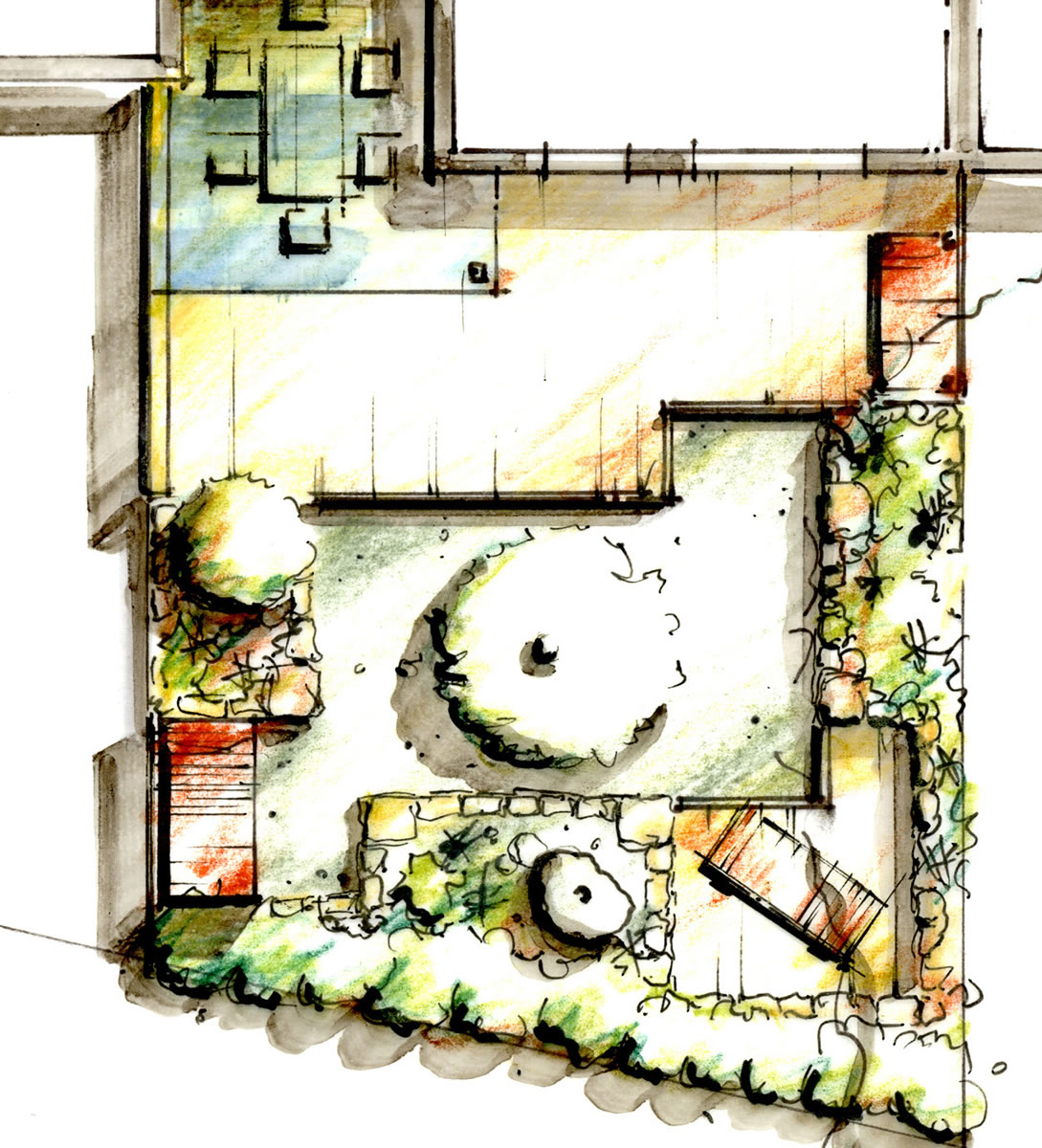A friend of mine built a new house last year. While he’s delighted with it, the project ended up costing more than he had anticipated. The money he has left over for landscaping is clearly not going to be enough to pay for the gardens he had envisioned.
He asked me for advice on landscaping with a limited budget, and I made a few recommendations. First, he should start with a plan. As is the case when building a house, having a good set of blueprints will help you avoid making needless and costly mistakes when designing a garden. Spending money upfront on a plan would give him the ability to build his landscape over time if need be.
Next, with a plan in hand, he should start by installing the essential hardscape for the project. Hardscape refers to anything other than plants, such as walkways, retaining walls, steps, driveways and the like.
After completing the necessary hardscape, I told him, he should begin concentrating on laying out the planting beds shown on his plan.
While he was eager to begin planting, I suggested instead he spend his time and resources preparing the site for planting. Marking out the beds, and amending the soil before buying any plants would make the job easier, and would help new plantings flourish.
Knowing much of my friend’s budget would be used up before he was ready to buy plants for his new yard, I suggested that he allocate any left over money to buying a few young trees.
My friend has often commented about the variety of deciduous shrubs, conifers, and broadleaf evergreens in my garden. Knowing he would like to have a garden with year-round interest, I offered to show him how to take cuttings from the plants in my yard.
Rooting cuttings from shrubs is a simple process and an inexpensive way to provide plants for your garden.
Winter is the perfect time to take hardwood cuttings. Start by collecting some branches from the desired parent plant.
Choose sections of growth from the previous season’s growth. Clip the branches into 6-inch pieces. Make the cut just below the node, or dormant bud of the twig. The dormant bud looks like a little bump on the stem where next season’s leaves will emerge.
At the top of the cutting, make the cut 3/4 inch above the node. Dip the bottom end of the cutting into some rooting hormone. Rooting hormone is available in different strengths and can be ordered from any horticultural supply company. Look for the specific grade used with woody plants.
Fill a large plastic pot with a mixture of 2/3 play sand and 1/3 plain potting soil that does not have fertilizer added to it. Be sure your sand is not beach sand. The salt in beach sand will inhibit rooting. Water the mixture well and let it sit until the water has drained out. The mix must drain freely or the cuttings will rot. The trick is to keep the cuttings moist but not soggy.
Dip the cuttings into water and tap to remove any excess water. Next dip the cutting into rooting powder and tap again to remove any excess. You want the powder to stick to the cutting stem.
Using a pencil, make a hole 21/2 inches to 3 inches into the rooting mix and place the cutting into the hole. Firmly pack the mix around the cutting and repeat with as many cuttings as you like.
When finished, water the cuttings carefully so they do not tip over.
Place the pot with the cuttings outside in a shaded, but sheltered location.



